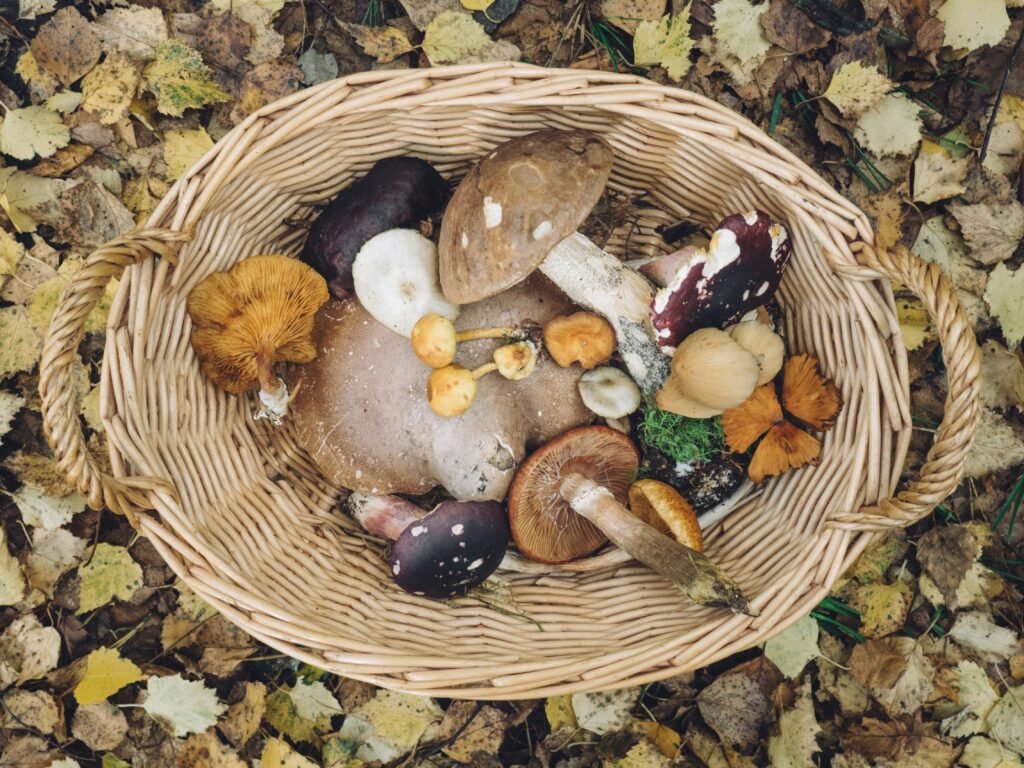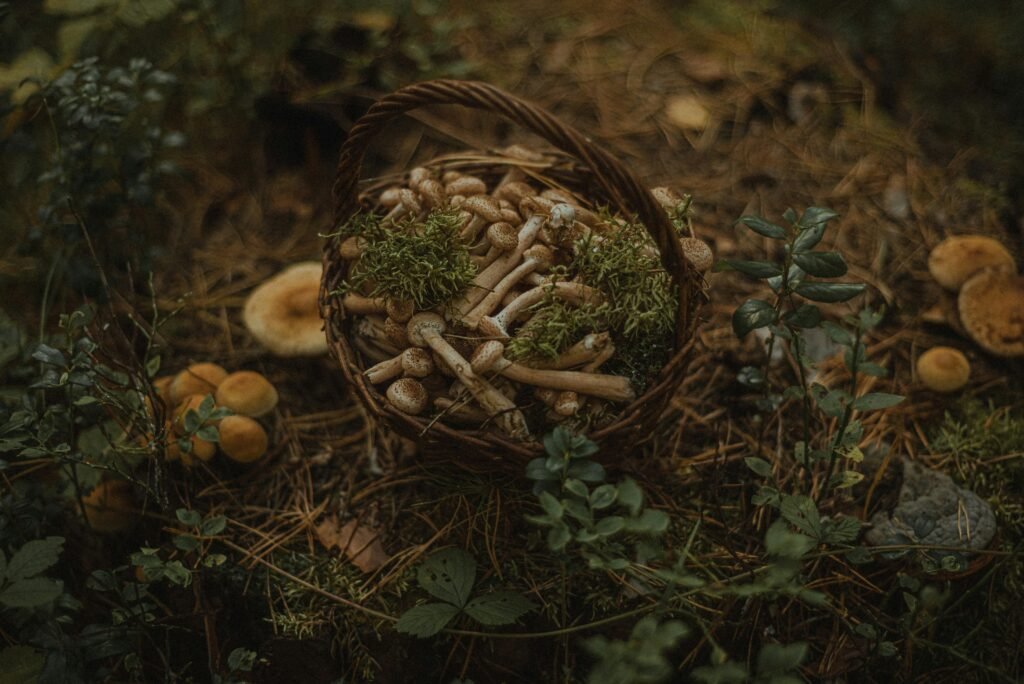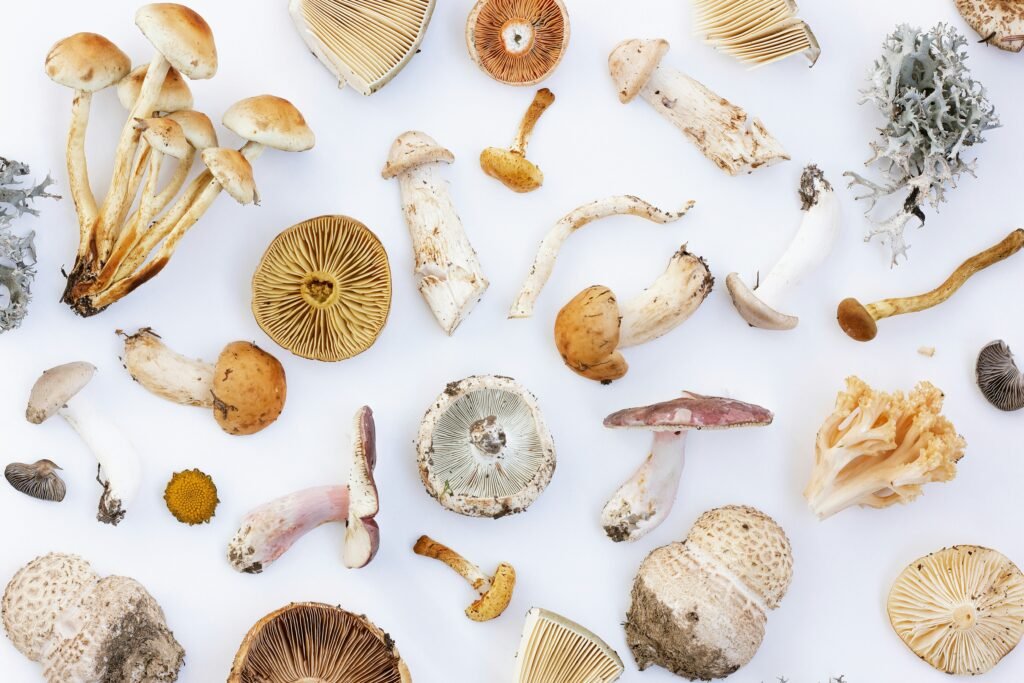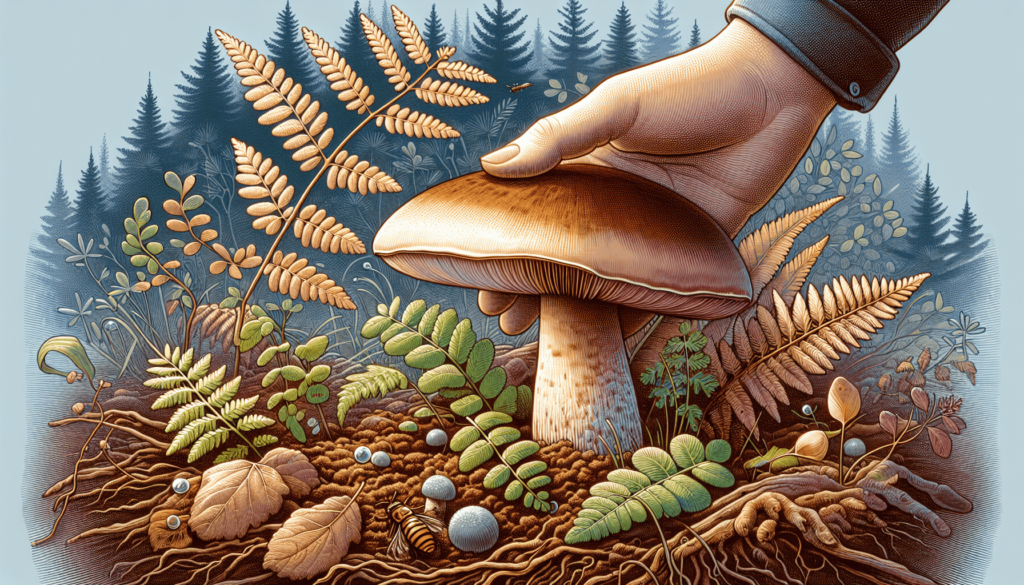Are you curious about the rules for mushroom foraging? Look no further! This article has all the information you need to ensure a successful and enjoyable foraging experience. Whether you’re a seasoned forager or just starting out, understanding the rules and regulations is crucial for preserving our natural ecosystems and staying safe while exploring the enchanting world of mushrooms. From permits to protected species, we’ll cover it all. So grab your basket and let’s dive into the exciting world of mushroom foraging!
Permits and regulations
Obtain necessary permits
When it comes to mushroom foraging, there may be certain permits required depending on your location. These permits are in place to ensure the conservation and sustainable harvesting of mushrooms. To begin your mushroom foraging journey, it’s important to research and obtain any necessary permits from local authorities. These permits may have specific guidelines and restrictions, so be sure to familiarize yourself with the regulations in your area.
Research local regulations
In addition to permits, it’s equally important to understand and adhere to the local regulations surrounding mushroom foraging. Different regions may have specific rules in place to protect the natural ecosystems and prevent over-harvesting. Take the time to research and familiarize yourself with these regulations to ensure you are foraging in a responsible and legal manner. It’s always better to be well-informed and respectful of the environment you explore.
Follow gathering limits
To sustainably forage mushrooms, it’s crucial to respect gathering limits set by local authorities. These limits are in place to prevent over-harvesting and allow the mushrooms to continue growing and spore dispersal. By following these gathering limits, you contribute to the long-term health and diversity of the mushroom populations in the area. Be mindful of the quantity you collect and ensure that you are within the permitted limits to promote a sustainable mushroom foraging experience.
Identifying mushrooms
Study field guides
Before embarking on your mushroom foraging adventure, it’s essential to study field guides that provide detailed information about different mushroom species. These guides typically include photographs, descriptions, and key identifying features of various mushrooms. By familiarizing yourself with these resources, you can develop a better understanding of the characteristics and traits that differentiate edible mushrooms from toxic ones. Take the time to study these guides and enhance your knowledge of mushroom identification.
Take a course or join a club
For those looking to delve deeper into the world of mushroom foraging, consider taking a course or joining a local club dedicated to mushrooms. These educational opportunities provide valuable hands-on experiences and expert guidance to further enhance your ability to identify mushroom species accurately. Courses can cover a wide range of topics, such as mushroom ecology, species identification, and even cooking with wild mushrooms. Clubs often offer group forays, where experienced foragers can share their knowledge with beginners. These activities can greatly contribute to your mushroom identification skills and overall foraging success.
Consult an expert
When in doubt about the identification of a specific mushroom, it’s always best to consult with an expert. Experienced mycologists or knowledgeable foragers can provide valuable insights and help you correctly identify mushrooms that may be challenging to classify. They can also guide you in distinguishing between edible and toxic varieties, ensuring your safety while foraging. Building relationships with experts in the field can be invaluable as you continue to develop your mushroom identification skills.

Choosing the right location
Explore different habitats
Mushrooms can be found in a variety of habitats, each with its own unique set of mushroom species. To maximize your chances of finding a diverse range of mushrooms, it’s essential to explore different habitats. From forests and meadows to wetlands and even urban areas, each location offers its own mushroom treasures waiting to be discovered. By venturing into various habitats, you expose yourself to a wider array of mushroom species, increasing the overall diversity and excitement of your foraging experiences.
Target diverse ecosystems
Within each habitat, there may be specific ecosystems that are particularly rich in mushroom diversity. Examples include old-growth forests, riverbanks, or even decaying logs. Research and target these diverse ecosystems within the habitat you are exploring. By focusing on these areas, you increase the likelihood of finding unique and interesting mushroom species that thrive in these specialized environments. Remember, nature is a complex web of interconnected ecosystems, each contributing to the overall biodiversity of our planet.
Avoid contaminated areas
While searching for mushrooms, it’s crucial to be mindful of potential contamination in certain areas. Avoid foraging in areas that may have been exposed to pollutants, pesticides, or heavy metals, such as industrial sites or areas near busy roadways. Mushrooms have the ability to absorb and accumulate toxins, making them potentially harmful if consumed from contaminated areas. Prioritize your health and well-being by practicing responsible foraging and choosing locations that are safe and free from contamination.
Responsible foraging practices
Leave no trace
As responsible mushroom foragers, it’s important to practice “leave no trace” principles. This means minimizing our impact on the environment and leaving the foraging area as we found it. It’s crucial to tread lightly, avoiding trampling on other vegetation or damaging the natural habitat. When harvesting mushrooms, gently remove them from the substrate, being mindful not to disturb the surrounding mycelium. By practicing leave no trace principles, we ensure the sustainability and preservation of our natural ecosystems for future generations.
Use appropriate tools
To protect the mushrooms and their habitat, it’s essential to use appropriate tools for harvesting. A small knife or scissors is often preferred for cleanly cutting the stem of the mushroom, leaving the surrounding soil and mycelium undisturbed. Avoid plucking mushrooms or using tools that may cause unnecessary damage to the substrate. By using the right tools and handling mushrooms with care, we can enhance their chances of regrowth and future spore dispersal, contributing to the ecosystem’s overall health.
Avoid over-harvesting
Sustainable foraging practices require us to avoid over-harvesting mushrooms. It’s crucial to consider the population size and growth rate of the mushroom species we wish to collect. By collecting only a portion of the mushrooms we encounter, we leave behind enough for the species to continue proliferating naturally. Over-harvesting can pose a threat to the local mushroom populations and disrupt the delicate balance of the ecosystem. Responsible foragers always prioritize the well-being and health of the environment over personal gain.

Safety considerations
Avoid toxic or unknown species
When foraging for mushrooms, it’s paramount to be able to distinguish between edible, poisonous, and unknown species. Unless you are confident in your ability to correctly identify a mushroom, it is best to err on the side of caution and avoid consuming it. There are numerous poisonous mushrooms that can cause severe illness or even fatalities if ingested. By sticking to familiar, well-identified species, you can ensure your safety while enjoying the bounty of the mushroom world.
Wear proper attire and gear
To ensure your safety and comfort while foraging, it’s important to wear appropriate attire and gear. Dress in layers and wear sturdy footwear suitable for varying terrain. Some mushrooms are more prevalent in damp or wooded areas, so waterproof clothing is advisable in such environments. Additionally, using gloves while handling mushrooms can help protect your hands from potential irritants or harmful species. By taking precautions and dressing appropriately, you can make your foraging experience both safe and enjoyable.
Use caution when handling mushrooms
While foraging, it’s essential to exercise caution when handling mushrooms, especially if you’re unsure about the species’ toxicity. Some mushroom species contain toxins that can be absorbed through the skin, so it’s important to wear gloves or avoid direct contact with unidentified mushrooms. Additionally, be aware of any allergic reactions or sensitivities you may have to specific mushroom species. By practicing caution and utilizing proper handling techniques, you can minimize the risk of adverse effects and ensure a safe foraging experience.
Environmental impact
Protect natural habitats
As mushroom foragers, it’s our responsibility to protect and preserve the natural habitats in which mushrooms grow. Avoid damaging vegetation, trampling delicate ecosystems, or disrupting animal habitats while foraging. By respecting the natural environment, we contribute to the overall health and balance of the ecosystem. Remember, mushrooms act as important decomposers and contribute to nutrient cycling within their respective habitats. Preserving these habitats ensures the long-term sustainability of both mushrooms and the entire ecosystem.
Respect wildlife
While foraging, it’s essential to respect and minimize disturbances to wildlife that may inhabit the areas you are exploring. Keep a safe distance from animals and avoid interfering with their natural behavior. Respectfully observe and appreciate the diverse range of wildlife you may encounter during your forays. Understanding the interconnections between fungi, wildlife, and their habitats fosters a deeper appreciation for the intricacies of the natural world. By respecting wildlife, we contribute to the overall wellbeing and ecological balance of the environment.
Follow ethical foraging practices
Ethical foraging practices go beyond just following regulations and permits; they encompass a deeper understanding and respect for the ecosystem as a whole. This includes practicing sustainable harvest methods, displaying gratitude for the mushrooms you collect, and giving back to the environment. Consider leaving a few mushrooms behind for spore dispersal and the benefit of other foragers or wildlife. By adopting ethical foraging practices, we demonstrate our commitment to preserving the natural world and its delicate balance.

Storage and transportation
Handle mushrooms with care
Proper handling of mushrooms is crucial to preserve their quality and freshness. Handle mushrooms gently and avoid squeezing or bruising them, as this can lead to faster decomposition. If you must clean mushrooms, use a soft brush or gently wipe them with a damp cloth rather than immersing them in water, as mushrooms are porous and can absorb excess moisture. By treating mushrooms with care, you can prolong their shelf life and maintain optimal flavor.
Store properly to maintain freshness
To maintain the freshness and quality of the mushrooms you’ve foraged, it’s important to store them properly. Ideally, store mushrooms in a paper bag or a breathable container to allow air circulation while preventing excess moisture buildup. Avoid storing mushrooms in plastic bags or airtight containers, as this can create condensation and lead to accelerated spoilage. Place the bag or container in the refrigerator’s vegetable crisper, where the temperature and humidity are typically suitable for mushroom storage. Proper storage practices ensure that your foraged mushrooms stay fresh for longer periods, allowing you to enjoy them at their best.
Package and transport safely
When packaging and transporting your foraged mushrooms, it’s important to prioritize their protection and prevent damage during transit. If possible, use sturdy, reusable containers that provide proper airflow. Avoid overcrowding the mushrooms, as this can lead to bruising or damage. Place a soft layer of paper towels or a cloth on the bottom of the container to absorb any excess moisture. For added protection, loosely cover the mushrooms with a breathable material like a mesh bag or perforated plastic wrap. Transport the mushrooms in a cool, shaded area to minimize exposure to heat and sunlight, which can accelerate spoilage.
Sharing knowledge and experiences
Join online communities
Mushroom foraging enthusiasts worldwide come together in online communities, sharing knowledge, experiences, and helpful tips. Joining these communities provides an excellent opportunity to connect with like-minded individuals, learn from experienced foragers, and seek advice when needed. Online forums, social media groups, and dedicated mushroom foraging websites offer a wealth of information, allowing you to constantly expand your understanding of mushrooms and engage with fellow enthusiasts.
Participate in local events
Local events, such as mushroom forays, workshops, or festivals, provide unique opportunities to immerse yourself in the world of mushroom foraging. These events often feature guided forays with knowledgeable experts who can guide you through the local mushroom habitat. You’ll have the chance to learn about specific mushroom species, their ecological role, and proper identification. Additionally, participating in local events allows you to connect with fellow foragers, share experiences, and foster a sense of community.
Contribute to citizen science initiatives
Citizen science initiatives play a vital role in expanding our knowledge of mushrooms and their ecosystems. By participating in these initiatives, you can contribute valuable data to scientific research while expanding your own understanding of mushrooms. Join projects that focus on mapping mushroom distributions, documenting species diversity, or studying the ecological impact of fungi. By taking an active role, you not only enhance your own foraging experiences but also contribute to the broader scientific community’s understanding of mushrooms.

Potential health benefits and risks
Consult a healthcare professional
Before incorporating wild mushrooms into your diet, it’s essential to consult with a healthcare professional. While many wild mushrooms are edible and offer various health benefits, there are also toxic species that can cause severe illness or even be fatal if consumed. A healthcare professional can provide personalized advice based on your medical history and any specific allergies or sensitivities you may have. They can help you make informed decisions about consuming wild mushrooms and ensure your safety and well-being.
Be aware of allergies and sensitivities
As with any food, it’s important to be aware of potential allergies or sensitivities to specific mushroom species. Some individuals may experience adverse reactions to certain mushrooms, ranging from mild allergic responses to more severe symptoms. It’s essential to pay attention to your body’s reactions and seek medical attention if you experience any unusual symptoms after consuming wild mushrooms. By being aware of your own allergies and sensitivities, you can make informed decisions about the mushrooms you choose to consume.
Understand potential interactions with medications
If you are taking medications, it’s crucial to understand the potential interactions between these medications and certain mushrooms. Some mushrooms may contain compounds that can enhance or inhibit the effects of certain medications. It’s essential to consult with your healthcare professional or pharmacist to ensure there are no contraindications or interactions that may compromise your health. By taking the necessary precautions and staying informed about potential interactions, you can enjoy the potential health benefits of mushrooms while still prioritizing your overall well-being.
Mushroom foraging etiquette
Respect private property
When foraging for mushrooms, it’s important to observe and respect private property rights. Seek permission from landowners if you plan to forage on private land. Trespassing is not only unethical but also illegal. By respecting private property rights, we demonstrate our appreciation for the land and foster positive relationships within the community. Remember, building respectful relationships is essential for the continued enjoyment of mushroom foraging.
Ask for permission
Whether you are foraging on public land or seeking access to private property, it’s always best to ask for permission before entering and harvesting mushrooms. Local land management agencies or private property owners may have policies and restrictions that must be followed. Requesting permission shows your respect for the land and its owners, and it helps build a positive image of mushroom foragers within the community. Respectful behavior, such as seeking permission, allows us to cultivate a mutually beneficial relationship between foragers and landowners.
Share locations responsibly
While it can be exciting to discover a particular mushroom hotspot, it’s important to share locations responsibly. Revealing specific foraging spots publicly can lead to over-harvesting, damage to ecosystems, and disturbance to local wildlife. Instead, consider sharing your knowledge on mushroom habitats and general foraging tips without disclosing exact locations. Encourage others to explore and discover their own mushroom treasures, preserving the mystery and excitement of the foraging experience. By sharing locations responsibly, we protect the delicate balance of the environment and show respect for the mushrooms and their habitats.
In conclusion, mushroom foraging can be an incredibly rewarding and enjoyable activity. However, it’s crucial to approach it with a sense of responsibility and respect for the environment. By obtaining the necessary permits, researching local regulations, and practicing sustainable foraging, we can ensure that mushroom foraging remains a sustainable and enjoyable pastime. Identifying mushrooms accurately, choosing the right location, and considering safety measures also enhance the overall experience. By prioritizing respectful behavior, preserving natural habitats, and being aware of potential health risks and benefits, we can fully engage in the world of mushroom foraging while minimizing our impact on the environment. Let’s embrace the wonders of the fungal kingdom responsibly, always leaving nature in a better state than we found it. Happy foraging!

